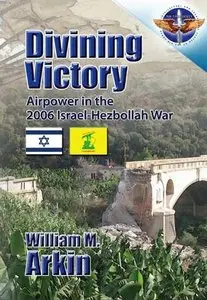William M. Arkin - Divining Victory: Airpower in the 2006 Israel-Hezbollah War
Air University Press | 2007 | ISBN: 1585661686, 9781585661688 | English | 354 pages | PDF | 4.88 MB
Air University Press | 2007 | ISBN: 1585661686, 9781585661688 | English | 354 pages | PDF | 4.88 MB
In the summer of 2006, Israel fought an intense 34-day war with Hezbollah, the first sustained modern air campaign conducted by a country other than the United States. As soon as the fighting was under way, many were declaring airpower oversold and inadequate. Commentators clamored for more-decisive ground action, asserting that only ground forces could defeat Hezbollah rocket fire, that the ground alternative would produce a "cleaner" and less tangled outcome, bring about different political realities, reduce civilian casualties and damage, and make greater gains in the battle for hearts and minds. When the Israeli government itself expressed its frustration with airpower and escalated ground fighting in the second week of the campaign, airpower critics felt vindicated. The antiairpower view could not help but further echo with all of the stark images of Beirut, the cavalcade of statistics of civilian deaths and destruction, and the departure of the chief of staff of the IDF just 6 months after the initial Hezbollah incursion across the Israeli border. What is more, despite all of the claimed Israeli military accomplishments, Hezbollah was declared as strong as ever. The war has thus been labeled a failure by many, and many of the war's ills are blamed on airpower. It is precisely because the 2006 Israel-Hezbollah war was not fought by the United States, because it was an intense and technologically complex irregular conflict fought between a nation-state and a terrorist organization, and because it involved difficult questions of civilian protection and modern information warfare that the U.S. Air Force and the U.S. military should examine it closely. This study is weakened by the fact that Israel was extremely sparse in divulging details of either its air campaign or its ground activity. Hezbollah was even more secretive. The author was therefore consigned to the empirical task of divining Israeli and Hezbollah intent through examining destruction on the ground.



